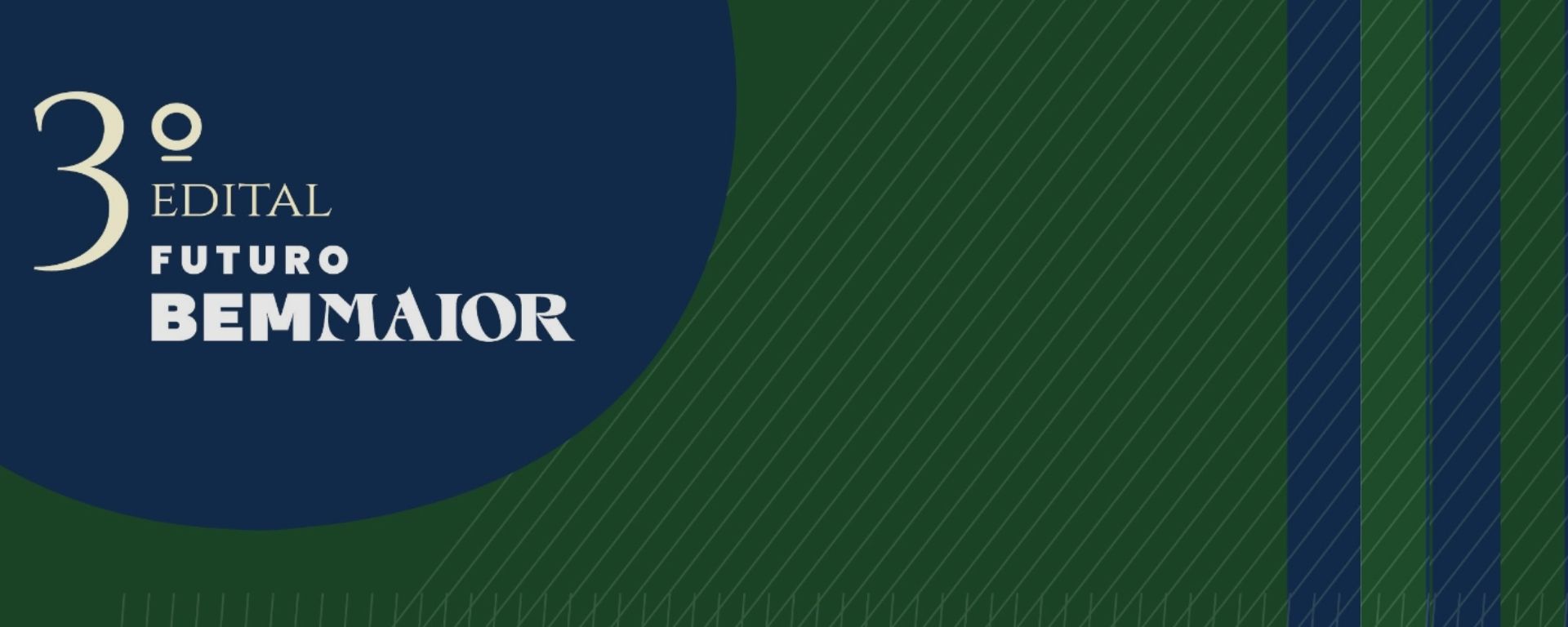Movimento Bem Maior

 ">
">
The Futuro Bem Maior notice , from Movimento Bem Maior (MBM), was born from the desire to collaboratively weave a more equal Brazil for everyone. We understand that, to co-build the country we want, it is necessary to weave together the philanthropic threads of the territory with its municipalities, communities and individuals.
In February this year, Fundação Getúlio Vargas carried out a survey showing that the number of people in poverty in Brazil jumped from 9.5 million, in August 2020, to more than 27 million. Hunger is back on the country's agenda with 19 million people in a situation of serious food insecurity, according to 2020 data from Rede PENSSAN . There are 9 million more Brazilians compared to 2018.
The pandemic highlighted social inequality at a national level and brought the issue of social vulnerability to the fore. The data point to a fragile country that is facing the exit from the pandemic with its marks and consequences. At the same time, it reinforces the union of organized civil society to try to sew up the wounds through mobilizations. And it is through the thread of philanthropy that we are creating bonds of solidarity to build solutions and meet latent social demands.
In its third edition, the Futuro Bem Maior notice has been reaping results and building a thesis of systemic transformation in which, to leverage the socioeconomic development of municipalities with high social vulnerability in Brazil, it is necessary to encourage the protagonism of local leaders – as these are the unique people capable of understanding challenges and building effective solutions. Social problems are complex and multivariable, and the solution must be constructed through dialogue and the vision of a legitimate community agent.
By working to strengthen Civil Society Organizations (CSOs) or collectives with broad local recognition, MBM helps them increase their capabilities to solve relevant social problems. This is done by training the management team, improving processes and helping with transparency, which consequently helps them attract new partners and investors, and supports local socioeconomic development. To this end, Futuro Bem Maior provides financial resources, exposure and credibility, training and insertion into exchange networks with other social entrepreneurs.
In the two previous calls for proposals, MBM supported a total of 86 social organizations in different states of the country, with an investment of R$7,915,064.08. Diagnoses were carried out in both editions to understand the organizations' perception of the partnership and evidence of significant changes was observed after the end of support. These organizations developed institutionally and, consequently, were able to increase and qualify the social action carried out.
After carrying out the selection stage for the third edition of the Futuro Bem Maior , we share below the methodology used to reach the 30 social organizations that will be supported in this new cycle. In particular, the desired profile approach and the possibility of merging qualitative and quantitative .
The third notice assumes that isolated numerical data are easily misinterpreted, therefore, any selection analysis requires a human eye. The process begins with understanding the final objective and desired profile. Encouraging an organization's leading role in a vulnerable community means, in addition to financial support, investing in the institutional strengthening of the organization itself and the agents responsible for identifying and understanding local needs. Therefore, the selection matrix is established by the structural analysis of the organization and the synergy of its activities with the demands of its municipality. The notice goes beyond supporting a specific cause and focuses on the development of the organization, in order to operate with higher quality and increase its local impact.
Greater Good Future selection process begins , divided into four stages:
Among the processes used, it is considered relevant to delve deeper into the construction of the scoring system in stage 3, which accompanied the individual analysis. The scoring system was used as an experiment to see if the quantitative was close to the qualitative . The criteria were built around seven themes associated with transparency, people management, fundraising, financial management and digital presence. Each criterion corresponds to a set of responses, classified on a scale of 0 to 5, with 5 being the highest value. At the end, all criteria are added together and ranked between 0 and 35 points. There was a hypothesis that the organizations relevant to the notice would be present in the score between 20 and 30 points, due to the structural, financial and fundraising difficulties they could present. The hypothesis was confirmed when comparing the qualitative analysis with the results of the scores, in which the crossing proved to be very efficient and could be better used in future notices.
Our intention with this system was to promote the fusion of a qualitative and quantitative to evaluating organizations, trying to find a humanized methodology in the midst of so much data. In this aspect, it should be noted that the success of a good scoring system comes from the correct formulation of the registration questionnaire, in which each question must have a purpose, a clear analysis behind it and must be written in such a way as not to direct responses or generate doubt about what is being asked.
It is worth mentioning that many of our learnings came from partnerships and collaborations with very experienced organizations, we thank everyone for their immense generosity. It is important to highlight the partnership with Instituto Phi, which throughout these three editions has been our great partner and, based on its wide repertoire in social project management, has helped us build an initiative that truly adds value to those who need it most.
We are aware that the development of new tools that foster institutional development and the strengthening of social impact actions at the forefront are continuous processes of active listening, adaptation and improvement. The version we present here was the result of the process of this specific notice which, following the concepts of Lean Thinking , has already generated ideas and new proposals for future notices .
We feel comfortable and excited to share this experience with you, managers of social organizations who participate in calls for proposals like this one or managers of grantmaker social organizations who, like us, want to continue improving their practices and are interested in applying similar methodologies in their processes. selection/evaluation. Anyone who would like to know more and exchange experiences or learnings on the topic, please contact us. Let's go together for a Brazil of opportunities!
. . .
This article was written by

Beatriz Waclawek, Project Coordinator of Movimento Bem Maior

Larissa Guimarães, Data Analyst at Movimento Bem Maior
Read also: How institutions supported by Futuro Bem Maior acted during the pandemic
Download the guide: How to Create an Emergency Fund
No posts found.